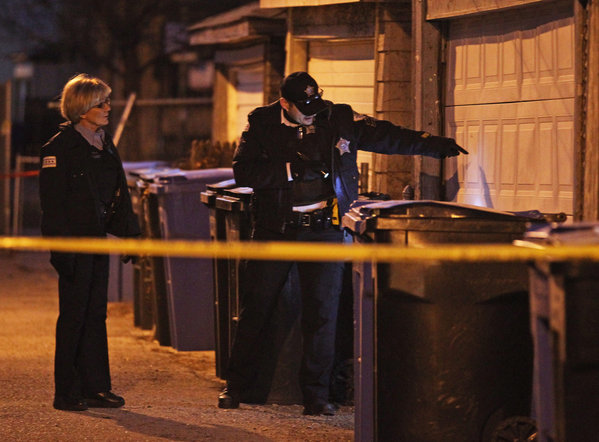
The final tally on Chicago homicides for last year is in: 506, with another three to begin the year. After a year of reading and writing about it, it's interesting to watch the conventional wisdom narrow down, especially where it syncs with the big weather story of the year:
Although it's difficult to pinpoint a single cause for last year's increase, statistics show the biggest spike came in the early part of 2012. Experts and some law enforcement sources believe the unseasonable warmth that hit Chicago during that period contributed to a homicide tally that, through early April, was 66 percent higher than it had been at that point in 2011.
The city was hit especially hard in March — the warmest March on record in Chicago — when it logged 53 homicides, up from 23 in March 2011.
Some law enforcement sources have also said the disbanding of two specialized units that swooped into "hot spots" to reduce violent crime may have contributed to the increase. Since police Superintendent Garry McCarthy was installed in May 2011 as the city's top cop, he's eliminated those strike forces, whose success relied on swarming streets, intimidating and harassing gang members, and clamping down on any violence in the neighborhoods they targeted.
There's not a lot of research on weather and crime, but what does exist suggests that there's an effect:
If such a temperature [at which point it the amount of crime people commit decreases due to temperature] does exist, it's probably somewhere in the 70s or 80s. Ellen G. Cohn, who's co-authored several papers on weather and crime, suggests that the effect is good "at least up to 85°F" (PDF). An excellent recent study looking at Cleveland (PDF) did not find a point at which crime decreased with increasing temperatures, but acknowledged that "excessive heat is relatively uncommon in Cleveland compared with other cities where inflection points have been observed (e.g. Dallas). And it's probably not surprising that the Minneapolis data linked above put the maximum at 75 degrees, and the Ohio study in the mid-80s: another theory is that, since people grow accustomed to their surroundings, the "inflection point" at which it gets too hot to bother being a criminal is different in different places. But a 1996 study found that hotter cities have higher violent crime rates, even controlling for poverty rate and culture ("an index of Southern culture").
Chicago isn't the only city to have had a historically hot 2012; lots of cities did, not all of which saw increases in homicides. The city has a problem beyond the weather, but the evidence indicates that it can exacerbate an existing problem.
Tribune reporters Jeremy Gormer and Robert McCoppin also touch on the specialized gang units, a focus of Noah Isackson's Chicago profile of Garry McCarthy, which notes that recent CPD heads have struggled with rising homicide numbers:
McCarthy believes that specialization is the enemy of community policing—an idea that took root long before he came to Chicago. “With specialization, those guys have zero connection to the community,” he says. “They offend a lot of people because not everybody is a perp.”
Even so, it’s hard to argue with the effectiveness of specialized units. Consider what happened when Cline began using them to target gangs, guns, and drugs in certain neighborhoods on the South and West Sides. Chicago went from being the murder capital of the nation in 2003, with 601 people killed, to 453 the next year (see "Murder Capital of America?"). That was the first time since the 1960s that fewer than 500 murders had been recorded.
McCarthy has an entirely different framework—a long game against crime—that's grounded in the work of Chicago sociologists, but the pressure on him to bring the numbers down quickly in 2013 will be intense.
Photograph: Chicago Tribune


